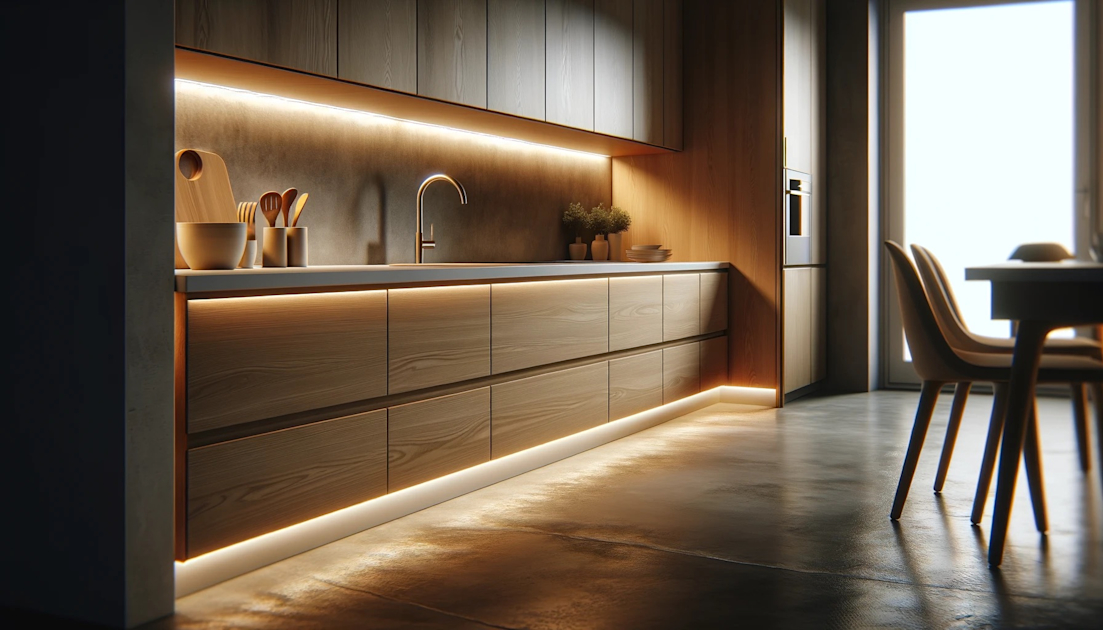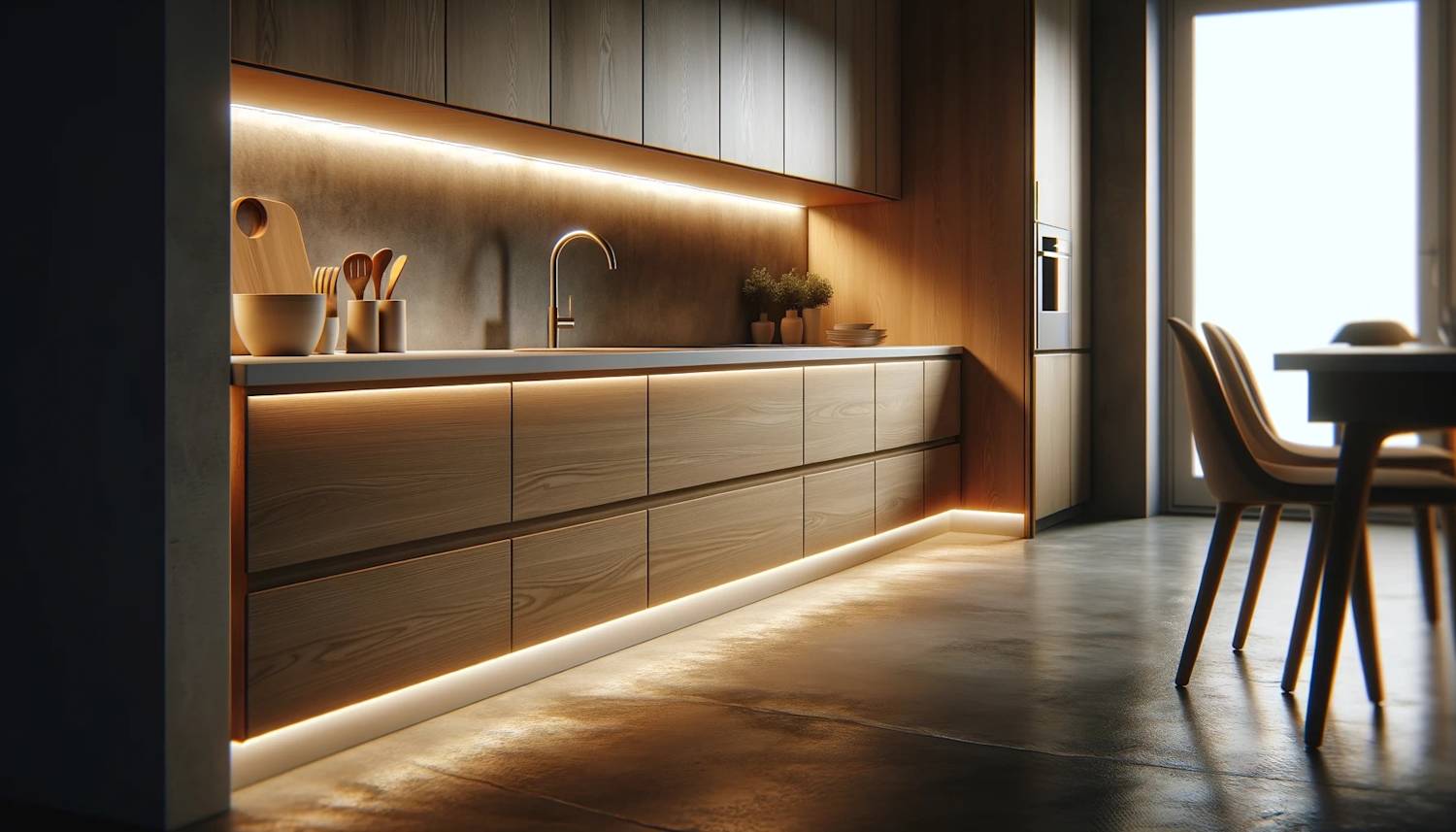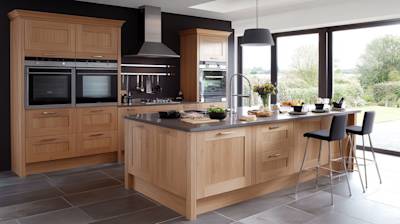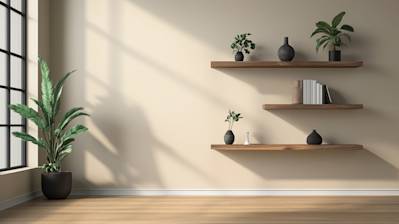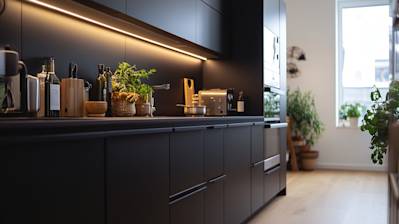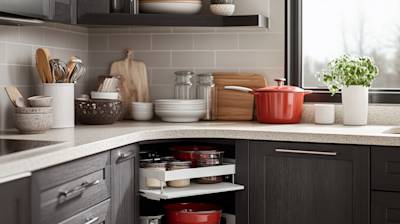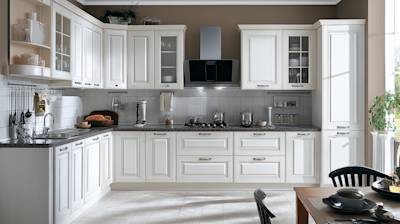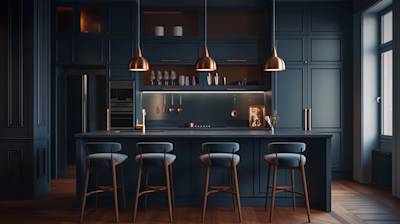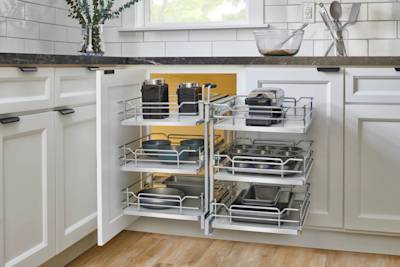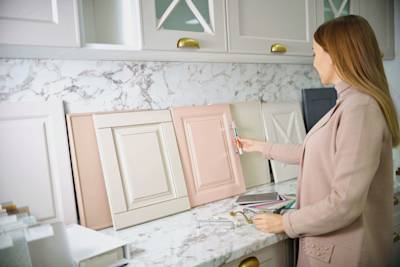You're here because you're curious about a "cabinet toe kick." Perhaps you've heard the term while shopping for cabinets, browsing interior design websites, or even while participatively renovating your kitchen. Or perhaps you're discovering this term for the first time. In any case, this comprehensive guide is designed to educate and inform you about everything you need to know about cabinet toe kicks. We'll delve into what they are, their import, different materials, common dimensions, and touch on some installation tips.
Understanding the Cabinet Toe Kick
In its simplest definition, a cabinet toe kick is the recessed area at the bottom of your built-in kitchen or bathroom cabinets that provides a foot space when you're working at the cabinet. However, they are more than just a workspace convenience. Let's delve a bit deeper.
The Purpose of a Cabinet Toe Kick
The toe kick serves several purposes:
- It prevents you from kicking the cabinet directly, which would eventually cause wear and tear.
- It offers a comfortable standing and working position. By allowing your feet to be slightly under the cabinet, it lets you get closer to the counter, reducing back strain.
- It gives a seamless look and adds to the aesthetics of your kitchen.
- It can serve as a hidden storage spot for some homeowners.
Different Materials for Cabinet Toe Kick
Toe kicks can be made from a variety of materials and can be picked based on preference, budget, or the design of the existing cabinets. Here are some common materials:
- Wood: This comes in a variety of finishes to match your cabinets.
- Plastic or Vinyl: This is an affordable option that comes in various colors and finishes.
- Stainless Steel: This gives a high-end, modern look but may require a bit more maintenance to keep fingerprints and smudges at bay.
Common Dimensions of a Cabinet Toe Kick
Though custom sizes are available, the most common toe kick dimensions are 3 to 4 inches high and 3 inches deep. These dimensions provide an ideal balance of hidden storage, aesthetic appeal, and ergonomic comfort.
Customizing Your Cabinet Toe Kick
Customizing your cabinet toe kick can add both aesthetic appeal and ergonomic comfort to your kitchen. Here are several ideas to consider:
-
Adjustable Height Toe Kicks: For individuals who are either taller or shorter than average, an adjustable height toe kick can be a game-changer. This customization allows you to set the toe kick at the perfect height for your posture, reducing strain on your back and legs.
-
Toe Kick Drawers: Utilize the space in your toe kick by turning it into a storage area. Toe kick drawers are an excellent place to store flat or rarely used items like baking sheets, platters, or table linens.
-
Lighting: Installing LED strips or motion-sensor lights in your toe kick can serve as a nightlight or simply enhance the ambiance of your kitchen. It’s practical for visibility during late-night snacks and adds a touch of modernity.
-
Ventilation Grills: If you have a central heating and cooling system, integrating toe kick ventilation can help with the circulation of air in the kitchen. This can be especially beneficial in kitchens where floor space is at a premium and traditional vents might be blocked by cabinetry.
-
Decorative Accents: The toe kick can also be used as a canvas for decorative expression. This could be through painted designs, accent tiling, or even materials like brushed metal or stone to add a unique visual element to your kitchen.
-
Heating Elements: For those in cooler climates, installing a radiant heating element in the toe kick area can provide a cozy warmth underfoot on chilly mornings.
-
Kick Plates: These can protect the cabinetry from scuffs and wear and can be crafted from various materials such as stainless steel, copper, or brass for added durability and style.
-
Accessibility Features: For those with mobility issues, the toe kick can be recessed further back to accommodate a wheelchair or a stool, making it easier to work at the counter.
Installing the Cabinet Toe Kick
The installation process typically requires careful measurement, cutting, and fastening to ensure it fits seamlessly with your cabinets. For DIY enthusiasts, make sure to have the right equipment on hand, including a circular saw, a finish nailer, and safety equipment. It's also important to measure twice so you cut once, but if you're uncertain, consider hiring a qualified professional.
Maintenance Tips For Your Cabinet Toe Kick
Cabinet toe kicks need as much care as the rest of the cabinet. Here's how to ensure they last:
- Regularly clean the dust and debris that tends to accumulate.
- For wooden toe kicks, consider painting or sealing them to protect against moisture and staining.
- Inspect regularly for any signs of wear or damage.
The cabinet toe kick is a crucial part of the kitchen and bathroom setup that is often overlooked. It not only protects your cabinets from unnecessary wear and tear but also offers ergonomic advantages. Therefore, whether you're designing a new kitchen or upgrading an existing one, it's equally important to pay attention to this fundamental component for a balanced look and robust functionality.
Frequently Asked Questions about Cabinet Toe Kick
Why is there a toe kick on cabinets?
The toe kick is an important feature of kitchen and bathroom cabinets. It allows you to stand closer to the count and reach objects on the back of the countertop with ease. As implied by the name, the toe kick gives just enough room for your toes to nestle under the cabinets when you’re standing at the counter.
What is a standard size for a cabinet toe kick?
With cabinets, the standard toe kick height is 3.5 inches, with a depth (or "kick area") of about 3 inches. These dimensions are often used because they are comfortable for most people, but you can choose to make the toe kick larger or smaller to suit your needs.
Can you adjust the size of the toe kick?
While the standard dimensions work well for most people, the size of the cabinet toe kick can be adjusted to suit individual needs or personal preferences. However, remember that making the toe kick too big or too small can affect your comfort when using the cabinets.
Do all cabinets have a toe kick?
Most bathroom and kitchen base cabinets will include a toe kick. It’s an important feature to improve user comfort. However, not all cabinets will have this feature, such as wall-mounted cabinets or certain styles of freestanding cabinets.
What is a toe kick drawer?
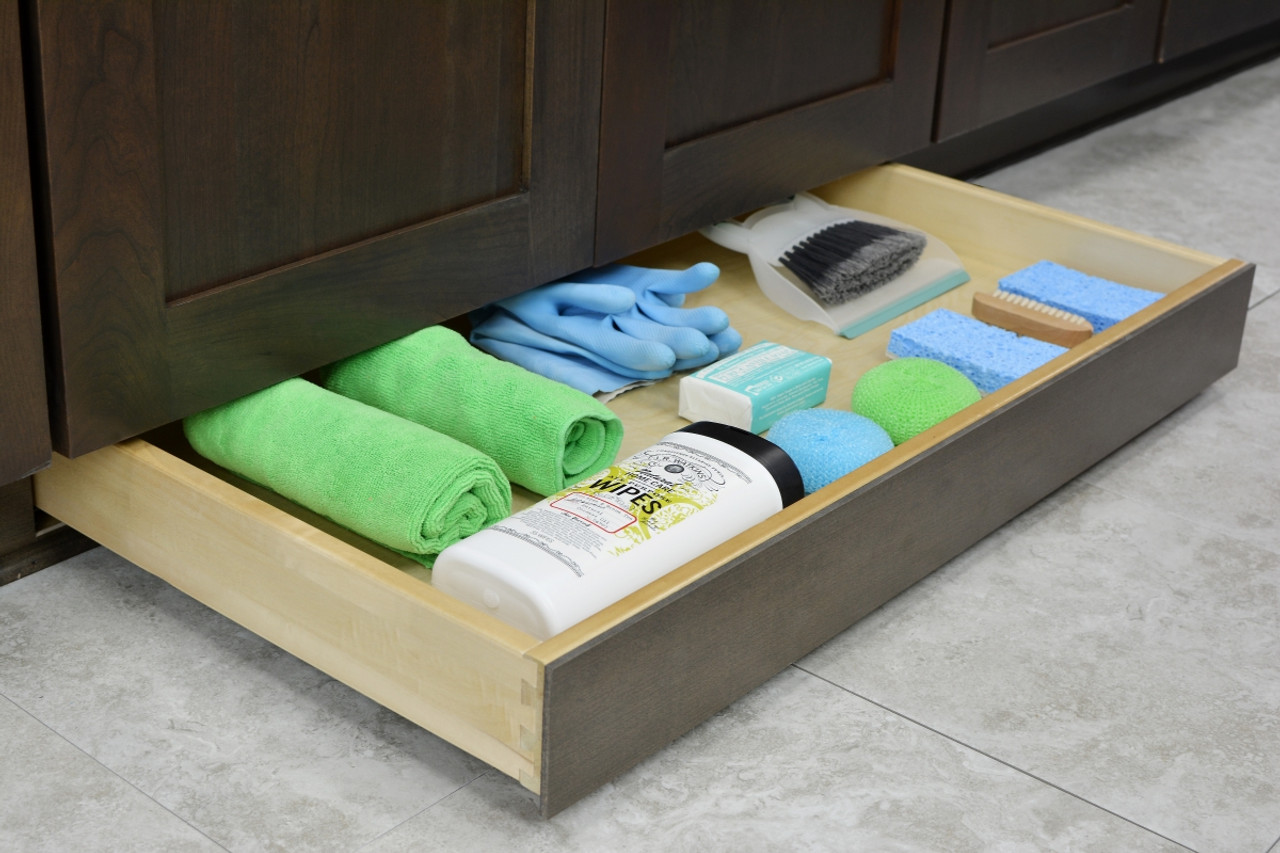
A toe kick drawer is a storage space built into the toe kick portion of a cabinet. While traditionally, the toe kick is just an empty space, some homeowners choose to install drawers in this area to improve their storage capacity.
How do you install a toe kick?
Installing a toe kick can be a DIY project or handled by a professional. The process typically involves cutting the toe kick material to fit your cabinet layout, aligning it with your cabinets, and then attaching it with glue, nails, or screws.
What materials can a toe kick be made of?
The toe kick can be made from a variety of materials. Often, it’s made from the same material as your cabinets for a consistent look. Common materials include wood, plastic, metal, and sometimes even finished with tile or a painted finish.
Can the cabinet toe kick be removed?
Yes, the cabinet toe kick can be removed if necessary. However, keep in mind that removing it might make standing at the countertop less comfortable. If you’re remodeling or replacing your cabinets, you might opt to remove the old toe kick before installing the new one.
What is toe kick lighting?
Toe kick lighting refers to light fixtures installed in the toe kick area of your cabinets. These lights can provide soft, ambient lighting and can be an aesthetic addition to your kitchen or bathroom.
How do you clean cabinet toe kick?
Cleaning the toe kick is part of regular cabinet maintenance. Due to its location, the toe kick can collect dust, dirt, and pet hair. Use a vacuum or a damp cloth to clean the toe kick regularly, ensuring to reach into corners and edges where debris can collect.
Can you add a toe kick to existing cabinets?
Absolutely, adding a toe kick to existing cabinets can be a simple way to enhance comfort and improve the look of your kitchen or bathroom. While it can be a DIY project for some, others might prefer hiring a professional for this task.
Can you buy pre-made cabinet toe kicks?
Yes, along with custom options, many home improvement and furniture stores sell pre-made toe kicks. They come in a variety of materials and finishes, allowing you to easily match them with your existing cabinets.
Pros and Cons of Cabinet Toe Kick
Pros of Cabinet Toe Kick
Ergonomic Comfort
One of the primary advantages of a cabinet toe kick is the increase in ergonomic comfort. This is because a cabinet toe kick:
- Allows for closer proximity to the countertops and cabinets while standing. This reduces the strain on your body while preparing meals or cleaning up.
- Provides sufficient space for your feet enabling you to stand closer to the cabinet, thereby reducing physical stress.
Boosts The Aesthetics
Another pro of the cabinet toe kick is that it boosts the visual appeal of your kitchen or bathroom. Specifically:
- You can paint or stain the toe kick to match or contrast with your cabinetry, creating a cohesive look or an interesting visual pop.
- Some people choose to add decorative toe kicks with unique designs, creating a custom look for their kitchen or bathroom.
Added Protection
The cabinet toe kick offers some protective benefits to your cabinets and flooring:
- It shields your cabinets from debris, water, and accidental foot traffic, thereby increasing the longevity of your cabinets.
- It also protects your flooring as it prevents the accumulation of dust and dirt under the cabinets.
Cons of Cabinet Toe Kick
Can Get Easily Dirty
One downside of the cabinet toe kick is its susceptibility to getting dirty:
- Due to its location at the base of the cabinets, it can accumulate dust, dirt, and debris quickly.
- The moisture from mopping the floor can also affect the cabinet toe kick, causing issues like mould or mildew over time.
Difficult to Install
Installation of the cabinet toe kick can be a challenging task:
- The process requires precision and expertise to ensure the toe kick is flush with the cabinet.
- In the case of pre-assembled cabinets, adding a toe kick post-purchase can be even more challenging.
Reduces Storage Space
Another drawback of the cabinet toe kick is the reduction of storage space:
- While the toe kick increases ergonomic functionality, it decreases the vertical storage space in your cabinets.
- This might not be ideal for those struggling with limited storage space in their kitchen or bathroom.
Pros and Cons of Different Cabinet Toe Kick Styles
Wooden Cabinet Toe Kicks
Pros:
- Wooden toe kicks can be easily matched with the wood of your cabinets, providing a seamless, natural aesthetic.
- They are sturdy and can withstand everyday wear and tear.
Cons:
- Wooden toe kicks can be prone to scuffs and scratches, especially in high foot-traffic areas.
- They are susceptible to water damage and are harder to clean compared to other materials.
Stainless Steel Toe Kicks
Pros:
- Stainless steel toe kicks offer a sleek, modern look to your kitchen or bathroom.
- They are easy to clean and highly durable, resistant to both water and physical damages.
Cons:
- Stainless steel toe kicks may not suit traditional or classical interior designs.
- They can show up fingerprint and water spots, requiring regular cleaning to maintain shine.
In conclusion, while the cabinet toe kick adds functional and aesthetic value to your kitchen or bathroom, its pitfalls cannot be ignored. Therefore, careful consideration needs to be given while opting for a toe kick, keeping in mind your needs, the interior style, and level of maintenance you're willing to provide.
Summary
Cabinet toe kicks exist for a reason and add a lot to the functionality of your kitchen. It helps provide balance by keeping the cabinet sturdy, keeping your valuable ceramics safe from falling and breaking. The significance of the cabinet toe kick is underrated, but without it, your kitchen cabinets wouldn't be as comfortable or as safe to use.
No doubt, the cabinet toe kick is a must-have if you engage in regular kitchen duties. It saves your feet from stubbing and gives you clear access to your lower cabinets. Its smooth surface makes sweeping and mopping under the cabinets much more manageable too. It's a small feature with big benefits.
So, whether you're doing a full kitchen remodel or just updating some parts, don't ignore the cabinet toe kick. From added comfort to increased accessibility and reduced risk of accidents, it's pretty evident that toe kicks are integral parts of a well-designed kitchen. Make sure it's part of your plan next time you think of reinventing the heart of your house.
About GVD Renovations & Remodeling
Welcome to GVD Renovations & Remodeling! We proudly serve Sacramento, CA, providing top-notch home renovation services since the day we started. Whatever home renovation project you have in mind—whether it’s a simple bathroom update, a complete kitchen transformation, or a home addition from the ground up — we have the skills, experience, and resources to get the job done right. Our skilled team prides itself on delivering unparalleled craftsmanship and superior customer service. At GVD Renovations & Remodeling, we're more than just contractors - we're your partners in turning your house into your dream home.
Tags: Cabinet Toe Kick, Kitchen Design, Home Renovation,



